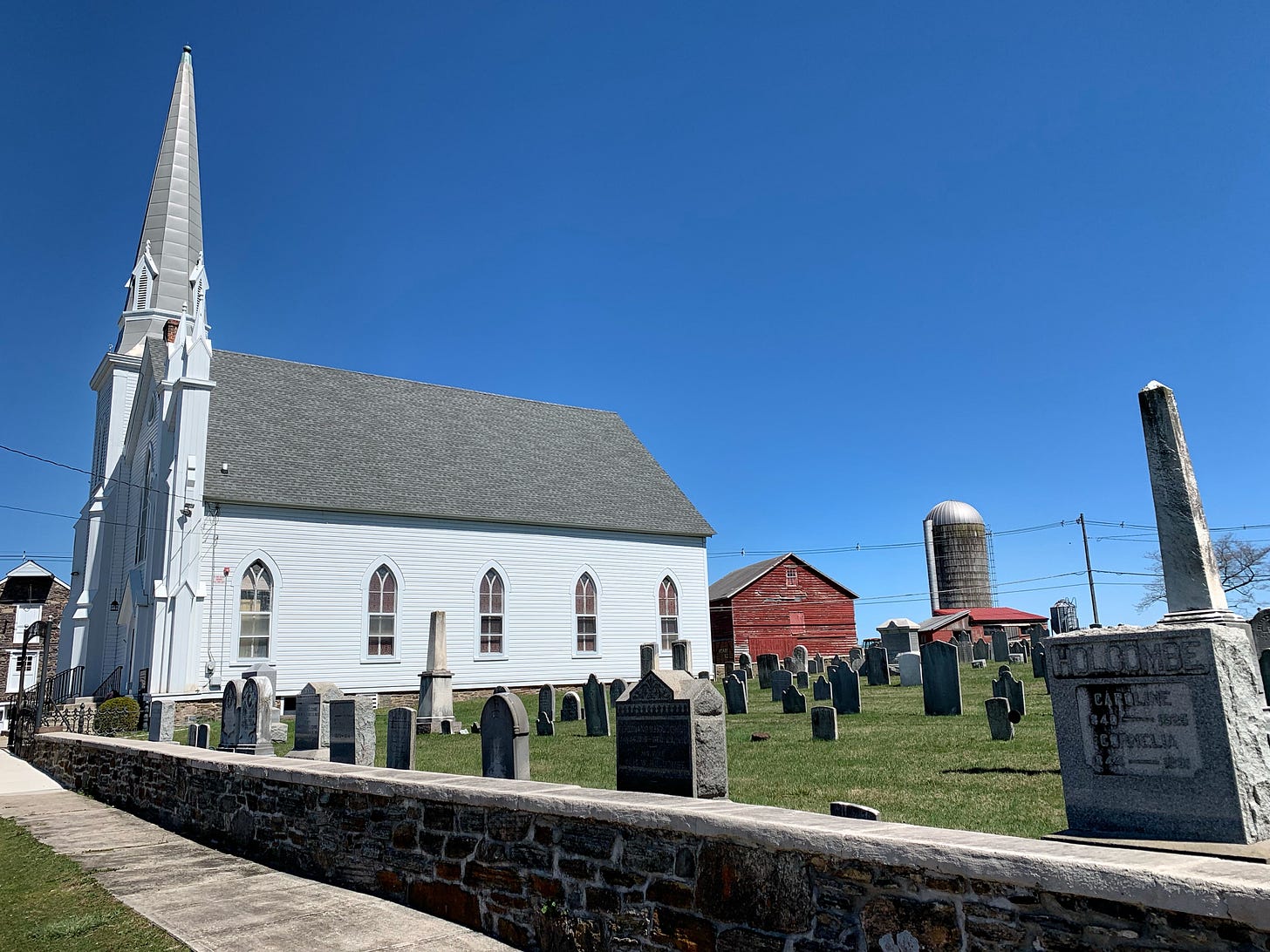Sunday Pastries With the Dead 21
The circa-1754 Mount Airy Cemetery in Amwell, NJ.
Today’s location is quintessentially country—a gorgeous gothic-style 1754-era church in a small circa-1743 New Jersey town, its stone-walled graveyard overlooking expansive rural views, red barns, and a grain silo.
This spot’s claim to fame is that the Revolutionary War’s patriot army once marched through the settlement in 1778 on their way to a battle in Monmouth, NJ.
I found it to be deeply peaceful here among the 650 or so graves. It’s a beautifully-maintained property and I was flush with the very distinct impression that its interred residents were proud, hard-working folks.
There are a surprising number of legible 1700s-era headstones here—among them, that of the infant child of William and Irene Muirheid (died 1760), four-year-old Samuel Lott (died 1768), three-year-old Henry Lott (died 1768), and 53-year-old Catharine Godown Ringo (died 1777). Samuel and Henry were brothers who died within five days of each other—my best guess would be from disease. I can’t even imagine the despair of their parents Henry Sr. and Phebe.
Some early 1800s markers made of less durable stone are still semi-readable—that of 77-year-old Albertus Ringo (died 1800), someone with the initials W+H who died on December 12, 1802, and 76-year-old Jonathan Burroughs (died 1811).
There are also some really stunning examples of the common hand headstone symbol, which carries different meanings depending on how the fingers and direction are arranged and what it may be holding. Catharine Holcombe’s has stumped me—a hand reaching down symbolizes the hand of God taking the deceased away, and a hand clasped with another means marriage or friendship; perhaps this downward-facing fist is an approximation of the two. Mary H. Sharp’s hand pointing skyward means that the deceased has gone to heaven (aka the direction of where the soul now resides). Solomon Holcombe’s hand pointing downward signifies that he died abruptly and unexpectedly (he was 81—maybe a heart attack? An accident?)
The location also boasts a plethora of fantastic historical names. Among them: Furman Romine, Keturah Lambert, Zephaniah Lambert, Issachar Hoagland, Theodosia Laning, Keziah Sharp, Lorra Wilson, Keturah Farlee, Absalom Phillips, and Uriel Phillips. (Out of curiosity, I checked—Keturah and Keziah are traditionally female names, and Uriel is male.)
I’ll leave you with an epitaph on William Laning’s lovely obelisk marker that stopped me in my tracks: After the conflict, the crown. It feels very timely to me at the moment—perhaps it resonates with you, as well. Until next Sunday, fellow taphophiles!











